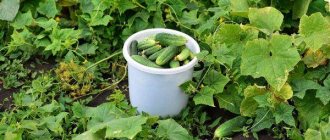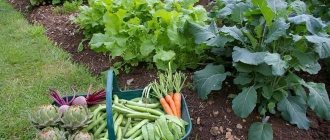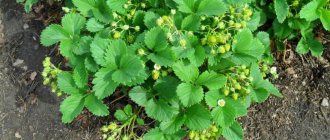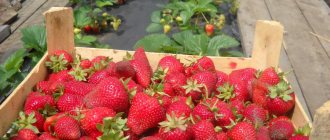With the onset of spring, an active time begins for all gardeners and gardeners. They begin to spend more and more time on their plots, trying to grow as many different crops as possible, sometimes in a relatively small area. Strawberries (garden strawberries), with their juicy and tasty fruits, as a rule, are grown by almost everyone. But not everyone knows what to plant next to strawberries so as not to harm them and grow a rich harvest of these wonderful berries.
In fact, strawberries are a fairly unpretentious plant and peacefully coexist with many vegetables, fruit plants and flowers. However, some crops can have a rather negative impact on its growth and reproduction. We will tell you in detail how to choose the right neighbors for your strawberries.
The importance of proper crop rotation
First, let's talk a little about which plants are good predecessors for strawberries and which are not. Crop rotation is the most important agrotechnical measure; with its help, the soil replenishes its natural reserves. Most crops are not planted in the same place each year because they draw different amounts of nutrients from the soil. Another reason for the need for crop rotation is that different plants respond differently to weeds, diseases and insect pests. Strawberries have some pests, but cucumbers, for example, have completely different ones.
This rule does not apply only to potatoes, tomatoes and legumes - they are able to successfully bear fruit for many years in one place without depleting the soil. Strawberries usually produce a good harvest for 3-4 years, and then they need to be transplanted to another area. Therefore, you should know which crops will be good predecessors for garden strawberries, and which ones are better to plant after them.
A pleasant neighborhood or what crops can be planted nearby
Over many centuries of growing vegetables, people have noticed that some vegetables grow well together, while others, on the contrary, interfere with each other's growth. Vegetables, herbs, and flowers help each other grow by improving the soil or keeping pests away from each other. Smart planting will provide you with a large harvest.
Choice of garden neighbors.
Choosing garden neighbors is the true art of garden planning. Each vegetable is planted in the garden not alone, but in the vicinity of another companion plant. These tactics help minimize the harmful effects of insects and diseases.
Garden neighbor rules. When choosing garden neighbors, pay attention to the families of vegetables. Vegetables from the cabbage family, for example, do well planted next to beets and green leafy crops. Some herbs will help repel pests from cabbage. Planted in the same bed as cabbage, mint will improve its taste.
Vegetables can experience not only sympathy, but also antipathy towards each other: some vegetables retard growth and reduce each other's yield. The simple sign below will help you choose a good neighborhood.
What to plant after strawberries
Each plant has its own requirements for soil, fertilizers, etc. Strawberries love organic fertilizers, loose and well-fertilized soil, which should contain sufficient quantities of potassium, nitrogen and microelements. This plant has a deep root system, therefore, observing the principle of alternation, it is better to plant crops with shorter roots in front of it. Another important point in crop rotation is that after a disease suffered by a previous plant, a crop that exhibits sufficient resistance to it should be grown in this place next year.
When deciding what to plant after strawberries, experienced gardeners usually opt for root vegetables or legumes.
You can safely plant:
- pumpkin;
- zucchini;
- cucumbers;
- radishes and turnips;
- onion and garlic;
- peas, beans, lentils.
Advice
Old strawberry bushes must be dug up and burned to destroy pests and pathogens. Then carefully remove all weeds and dig the soil deeply.
It is not recommended to plant after strawberries:
- rosacea raspberry;
- hawthorn;
- cloudberries;
- rose hip.
These plants have many diseases and pests in common with garden strawberries. They also have almost the same requirements for soil composition.
What vegetables grow well in one bed?
I offer you a short table of vegetable compatibility. More detailed information is provided later in the article.
Other useful neighbors for vegetables
In addition to the neighborhood of one vegetable crop with another, it is good to consider other possible neighborhoods - vegetables and flowers, vegetables and herbs. Such combinations in garden beds are not only beautiful, but also useful.
Flowers next to vegetables.
Good advice: plant a few marigolds in the tomato bed; they repel pests. You can even decorate the entire perimeter of the garden with marigolds - this will help keep pests at a distance.
Some flowers act as pest traps, luring insects to them. Nasturtiums, for example, are very popular with aphids. These pests will prefer to feast on nasturtium and will not pay attention to nearby vegetables.
Vegetables and herbs.
Planting herbs nearby will give your vegetables a more refined taste. They also repel harmful insects. Rosemary repels beetles that attack beans. Thyme repels cabbage pests. Onions and garlic repel aphids. Oregano, like marigolds, is a good all-purpose barrier against most insect pests.
When deciding which vegetables to plant nearby in the garden, you need to be guided not only by scientific data, but also by common sense. Lettuce, radishes and other fast-growing plants can be planted between melons or pumpkins. Lettuce and radishes will ripen before the pumpkin grows. Shade-loving green leafy vegetables such as spinach and chard are grown in the shade of corn. Sunflowers also grow well next to corn because their roots occupy different levels in the soil and do not compete for water and nutrients.
Well, let's move from the particular to the whole, and consider the successful and unsuccessful neighbors for each vegetable.
The best predecessors of strawberries
The best crops that grew in the garden bed before planting strawberries on it are:
- radish;
- parsley;
- spinach;
- mustard;
- garlic;
- turnips and radishes;
- legumes;
- carrots and beets;
- corn.
Bulbous flowers will also be useful predecessors:
- hyacinths;
- tulips;
- daffodils, etc.
If the area of the plot allows, agronomists recommend growing strawberries after black fallow or rehabilitating the soil with the help of green manure plants:
- wiki;
- alfalfa;
- buckwheat:
- oats;
- clover;
- lupine;
- grain crops, etc.
Advice
Among other green manures, alkaloid lupine is considered the most suitable for strawberries. It produces substances that are poisonous to wireworms, but is absolutely harmless to berries, without affecting their taste or edibility in any way.
After digging, the plants will remain in the soil. They will improve its structure, enrich it with nitrogen and have a positive effect on weed suppression. It is strictly not recommended to plant strawberries after potatoes, cucumbers and tomatoes.
Mixed plantings
A special science, allelopathy, deals with the problems of interaction between plants in the garden. Any plant releases a variety of substances into the soil and air that have a positive or negative effect on its “neighbors.” The useful and harmful proximity of vegetables in the beds is presented in the table below. In the meantime, let's look at the advantages of mixed planting technology:
- saves space in the garden;
- the soil is less depleted, there is no need for annual crop rotation;
- less effort is required to treat pests, since some plants themselves repel them;
- when planting vegetables together in beds, almost no additional fertilizer is required;
- The quality of the harvest and the taste of the fruits increase (for example, beans can make radishes tastier, and mint can make white cabbage), as well as the amount of vitamins and sugars in them.
Rules to follow when organizing combined plantings of vegetable crops:
- The width of each bed should exceed a meter. This will be necessary in the future for ease of plant care.
- The bed is divided into several sections. Crops that take a long time to grow and ripen are planted in the central one. These are peppers, cabbage, tomatoes. When the season comes, they will already occupy a good half of the ridge.
- Those types of crops that ripen quickly are planted from the edges. Mostly greens, but also strawberries and grapes.
An example of a properly organized garden bed for joint plantings:
Lettuce grows on the edge, carrots or radishes alternate with marjoram in the second row, and onions in the third. The 4th and 5th row correspond to the 1st and 2nd. Cucumbers are planted in the middle.
You can come up with a lot of similar schemes, it all depends on the required plants and on your attentiveness in matters of their combination.
Rules for planting strawberries
Combined planting allows you to economically and rationally manage the space of your garden, especially if it is small. In addition, beneficial neighbors have a beneficial effect on each other, improving the condition, taste and nutritional value of the fruit. Another advantage of such plantings is that the plants protect each other from diseases and pests.
There are four rules for planting plants together that it is advisable for every gardener to know and follow.
- Rule 1. Crops that need the same nutrients should not be planted next to each other. They will try to take them from each other, and as a result, both plants will not develop well and bear fruit.
- Rule 2. The proximity of plants that have different watering requirements is also undesirable. It turns out that one crop will not have enough water, and the second may suffer due to excessive watering.
- Rule 3. Plants should not shade each other. This can only be done if one of the crops requires shade or diffuse lighting.
- Rule 4. If plants that have common diseases and pests are planted in the same bed or nearby, you can destroy two crops at once. Such a landing is strictly not recommended.
In the case of growing in greenhouses, it is important that the humidity, light and air temperature are suitable for each of the plants.
As for strawberries, they require soft, loose soil rich in nitrogen, potassium and phosphorus. It also needs plenty of watering and sufficient, but not too bright, lighting. Garden strawberries can be affected by late blight, so plants that carry this fungus should not be planted next to them. The most dangerous pests for berries are slugs and wireworms.
Advice
Mulching strawberry beds with coniferous (spruce or pine) needles has a positive effect on its taste.
To get a good, abundant harvest, you need to select neighbors for strawberries, following the above recommendations and rules of crop rotation.
Culture compatibility
There are crops that are better to grow nearby. Planting them together has a number of advantages: it increases mutual yield, protects against many diseases, viruses and pests, and saves free space in a small area.
It is worth familiarizing yourself with the recommendations for growing plants together:
- A mixed garden with crops that consume the same substances from the soil that are beneficial for growth is not suitable for growing together. A struggle will arise between them, and each plant will not receive enough of them, will grow more slowly and produce a weak harvest.
- The different needs of crops for watering will lead to the fact that one crop will not receive enough moisture, while another may begin to rot.
- A taller plant will not sit well next to a smaller one. It will create excessive shadow, and the latter will not be able to fully develop due to lack of light.
- Plants that are susceptible to attack by the same pests or prone to the same diseases will, when infected, inevitably infect a neighboring crop.
What can you plant next to raspberries?
Neighborhood with root vegetables
The best neighbor for garden strawberries among root vegetables is root parsley. Planted between berry bushes, it will repel snails and slugs. Also a good combination is strawberries and carrots, but you don’t need to mix it with parsley, you need to choose one thing. But both carrots and parsley go well with garlic or onions.
You can also plant next to strawberries:
- beets;
- radishes;
- radish.
It is better to choose varieties for planting whose fruiting time coincides with that of strawberries. Radishes can be planted directly between the rows; for this, leave a distance of 50-70 cm between the rows. And it is better to place radishes or beets in adjacent beds, but not by combining them with each other, but by choosing one of the crops.
Compatibility of plants in the garden table. The best compatibility of fruit trees and shrubs
The best compatibility of fruit trees in the garden is achieved if they are arranged in homogeneous groups (apple trees with apple trees, pear trees with pears). But only owners of large plantations or production cooperatives have such opportunities. Therefore, you will have to study in detail the compatibility of plants and the rules for planting them in small areas.
Compatibility is affected by lighting, nutrition, soil, fertilizing, allelopathy (negative effects). In the table, cells indicating an undesirable proximity of plants are highlighted in red, and favorable ones are highlighted in green. Empty cells indicate the neutral nature of the neighborhood.
The apple tree is the most unpretentious fruit tree. It gets along with many vegetable and garden crops and has a powerful root system. While the apple tree is young, raspberry bushes have a beneficial effect on its development (they loosen the soil). Apple trees develop faster and bear fruit abundantly if a couple of deciduous or coniferous trees are planted in the apple orchard. Ash-leaved maple secretes phytoncides and protects the apple tree from pests.
Many types of pears are sterile, so they need to be planted in pairs. They do not tolerate apple trees, plums, currants, and gooseberries growing nearby, but they favor rowan, oak, and poplar. Juniper is considered the most harmful neighbor.
Cherry does not tolerate currants, raspberries, gooseberries and easily gets along with cherries and plums. Superficial roots of the cherry tree can fill the entire area.
Different varieties of plums (Russian, Chinese, Amur) cannot be planted together, but they get along well with cherries and maples. And black elderberry saves plums from aphids.
The grape goes well with Chinese lemongrass, pear, and gets along well with raspberries and cherries, cherries and apple trees. Cannot stand the proximity of quince and hazel.
Sweet cherries grow well in the same garden with cherries and plums, but they are not happy in the proximity of apple and pear trees. It has powerful roots and takes away nutrients from weaker plants.
Honeysuckle and black currant are good neighbors, but they don’t get along with red currants. But the gooseberry is friends with her.
Sea buckthorn is compatible with many shrubs and trees, but it must be planted carefully, otherwise it will clog any plant with its long roots. To limit the spread of roots, slate or iron shields are dug around the sea buckthorn. Sea buckthorn is a useful medicinal plant.
Currants of different varieties are not planted side by side. Red berries need more intense lighting. Plant blackcurrants next to honeysuckle, away from cherries, apples and raspberries.
Gooseberries get along well with red currants. It needs a lot of sun. The main external enemy of the bush is the gooseberry moth. Gooseberries grow well next to plums and pears.
Raspberries will sweep out many neighbors in the garden. It is light-loving, with an aggressive root system. Raspberries are usually planted in two rows and prevented from spreading into neighboring beds. Gooseberry and currant bushes will wither next to the raspberries.
In the garden between the trees it is useful to sow anise, tarragon, basil, parsley, coriander, lemon balm, and thyme. Their odorous substances, repelling pests, inhibit the spread of many diseases.
Combination of strawberries with onions and herbs
Among bulbous plants, strawberries get along well with garlic and onions. Just don’t plant them next to each other, since onions and garlic have common diseases and pests. In terms of usefulness, garlic is especially worth noting. It repels the fungus that causes late blight, and the berry is very susceptible to this disease, especially some varieties. Root parsley, already mentioned above, works well with garlic.
Strawberries and onions also go well together. If you also plant carrots nearby, these crops will repel pests from each other, and at the same time protect the strawberry beds. Onions as a neighbor also promotes the rapid growth of berries and the reproduction of strawberries, eliminating the problem of rotting bushes.
Among green crops, the berry goes well with plants such as:
- sorrel;
- spinach;
- borage;
- various types of salads.
The majority of green crops are unpretentious and do not deplete the soil. They do not share any common pests with strawberries. And with the right planting scheme, they can create some darkness - in the southern regions, where the sun is active, this will be very useful. According to reviews from experienced gardeners, greens accelerate the growth of strawberry tendrils, which is important for vegetative propagation. In addition, green crops do not require special care, and herbs (coriander, basil, thyme, anise, tarragon, etc.) repel many pests.
Is it possible to plant different varieties of strawberries next to each other?
Having considered desirable and undesirable crops for planting, it is worth dwelling on the question of whether different varieties of strawberries can be planted side by side. Some experts believe that if you plant several different varieties next to each other, you can get degeneration of the crop due to cross-pollination.
But strawberries can bear fruit when one type is planted, because it is a self-pollinating plant. And when several varieties are adjacent, cross-pollination occurs, improving the quality of the fruits and their quantity.
Breeders sometimes specifically plant the strawberry varieties they need nearby. This way they get mixed varieties. Closely growing varieties do not affect the yield and quality; you just need to follow certain care rules:
- You need to make sure that the plants do not intertwine with rosettes. The mustache should be directed in different directions.
- It is necessary to water different varieties with different ripening periods.
- Low-grade strawberries need to be mulched to protect them from rotting.
Legumes and strawberries
Plants of the legume family occupy one of the leading positions in the list of neighbors useful for garden strawberries. These are peas, various varieties of beans and lentils and other crops. Thanks to their root system, they “loose” the soil and supply it with nitrogen, which is beneficial for the berries. The beds with legumes can be positioned so that the strawberries are slightly shaded and receive diffused rather than direct lighting.
However, legumes, by producing nitrogen, can make the soil too acidic. To avoid this, you can use fertilizers containing alkali. And you will have to do more careful weeding, because many weeds also grow very willingly next to legumes.
Planting legumes next to strawberry beds
Some of the best neighbors for strawberries are various legumes. Beans, peas, lentils and their relatives have a beneficial effect on the soil and the resulting crop. Their roots loosen the soil and supply it with nitrogen, which improves the health of garden strawberries and allows you to harvest more berries. In this case, legumes can be grown in such a way that the strawberry beds are shaded. Weak and constant shade will benefit the beds if strawberries are grown in the southern regions of the country.
Separately, it is worth mentioning such a plant as alkaloid lupine. It also belongs to legumes and is considered the most suitable green manure for strawberries. After all, it produces substances that are harmless to strawberries, but poisonous to wireworms, and is the best remedy for this pest. Moreover, such proximity does not in any way affect the taste and edibility of the berries. But feeding animals with beveled alkaloid lupine is strictly not recommended; it is harmful to them.
Despite all the positive features of leguminous plants, there are a number of restrictions on their planting. Due to the nitrogen they produce, they increase the acidity of the soil, so it is recommended to use fertilizers that have an alkalizing effect. Testing the acidity of the soil is not difficult; simple kits with convenient and understandable instructions for use are available for this purpose. Another feature of a number of leguminous plants is that some weeds grow more readily next to them. Therefore, it is necessary to clear the area of weeds carefully and carefully.
Strawberries and flower crops
In addition to vegetables and herbs, strawberries go well with flowers, especially tulips and irises. According to experienced gardeners, they are able to increase the yield of garden strawberries several times, well promoting their growth. This applies to the greatest extent to varieties of remontant strawberries. In addition, irises and tulips help the heat-loving plant endure cold winter periods more easily.
In addition to them, you can plant other flowering plants next to the strawberry bed (or directly on it):
- clematis;
- peonies;
- fern;
- rhododendron;
- jasmine;
- nasturtiums;
- delphinium;
- marigolds, etc.
These flower crops also have a beneficial effect on the growth and development of garden strawberries.
Flowers such as marigolds deserve special attention. With their properties they repel many pests:
- nematode;
- weevil;
- mole cricket;
- onion fly, etc.
In addition, these flowers protect against fusarium, which is very important for strawberries.
Advice
You can plant marigolds not only in beds and between rows, but also along the entire garden perimeter. It is also useful, when digging up the soil in spring, to scatter finely chopped marigold stems in it.
Companion plants for strawberries
Borageaceae
With the help of a deep and branched root system, comfrey and its related borage accumulate nutrients in high concentrations in their leaves. It is enough to chop the green mass, dry it and use it as mulch in the garden to transfer the stored potassium, calcium and magnesium to the soil. These plants reproduce by self-seeding and require no care at all, and in addition they attract pollinating insects and repel some pests. Strawberries growing next to them increase resistance to diseases and improve the taste and aroma of the berries.
Onion
Onions and garlic have similar properties. Trimming the chives after flowering will help maintain a neat appearance, and the cut greens will be useful for mulching. It can be planted right among the strawberry bushes: the pungent smell will repel slugs, ticks and other pests. Neighborhood with garlic reduces the likelihood of fungal diseases: late blight (one of the most dangerous enemies of strawberries), gray rot, white rot and others.
Legumes
Beans, peas and other members of the family loosen the soil and saturate it with nitrogen. In the southern regions, you can plant it in such a way that the strawberries receive diffused light and do not suffer from the scorching sun. However, legumes increase the acidity of the soil, and weeds actively grow around them: when choosing such a companion, be prepared for more frequent weeding and the application of alkaline fertilizers as needed.
Legumes are incompatible with onions and garlic.
Greenery
Essential oils of herbs - basil, coriander, thyme, anise, tarragon - are not to the liking of many pests, and root parsley will protect the crop from slug invasion. Greens are undemanding in terms of nutrients, so strawberries get along well with lettuce, sorrel, and spinach, but, as with legumes, care should be taken to properly plant the plants so that they do not suffer from lack of light.
Fennel is not compatible with almost any crops.
Ornamental plants
If the bed is adjacent to a flower garden, strawberries will respond especially favorably to irises and tulips: next to them, the berry harvest is richer, and the colder season passes with the least loss. Neighborhood with clematis, peonies, jasmine, nasturtium, fern, rhododendron, and delphinium will also have a positive effect. Marigolds do an excellent job of protecting against harmful insects - they protect plantings from nematodes, weevils, mole crickets, onion flies and other pests. Also, these flowers prevent the development of fusarium, to which strawberries are vulnerable.
Trees and shrubs
The company for strawberries is rare, but if the shade does not obscure the plantings, it is acceptable. Spruce, pine, sea buckthorn and grapes have a positive effect on the quality and quantity of the harvest.
Mulching with spruce or pine needles improves the taste of berries.
The proximity of strawberries to trees and shrubs
The proximity to various trees and shrubs is also favorable for strawberries. The berries of spruce, pine, sea buckthorn, grapes, etc. have a good effect. The main thing is that the trees do not greatly shade the beds.
Important!
Under no circumstances should strawberries be planted next to a birch tree; it does not tolerate such proximity very well. So much so that you may not see any harvest at all, destroying all the berries.
What not to plant strawberries with
Some gardeners still believe that it doesn’t matter what you plant strawberries with, they are unpretentious and will still grow. This statement is only partly true. Indeed, strawberries will grow, but will they bear fruit? Will there be a rich harvest? What will the berries taste like?
Experienced gardeners do not recommend planting strawberries next to the following crops:
- Jerusalem artichoke.
- Solanaceae.
- Horseradish.
- Sunflower.
- Plants from the clove family.
Tomatoes and potatoes can destroy strawberries in a few months, since these crops spread late blight.
Sunflower, cabbage and Jerusalem artichoke greatly deplete the soil. Sunflower seeds are poisonous to strawberries.
Raspberry bushes completely dry out the soil, shade the beds, and strawberries will completely stop bearing fruit.
Types of Strawberries
Before you start growing garden strawberries, you need to decide between the two main types of this crop. Large varieties allow you to harvest only once per season, while seedlings with smaller but numerous fruits allow you to harvest over a long period of time. You can plant both types and enjoy the results throughout the summer. Next you should start preparing the soil.
Important!
Strawberries love sun and well-drained areas, so it is worth preparing the soil several months before planting seedlings. Organic compost and manure should be added to the soil, and fresh plantings should be covered with mulch.
Strawberries should be planted in holes at a distance of about 25–30 centimeters. The soil should cover the roots so they don't dry out. Immediately after planting, seedlings should be watered without wetting the leaves and flowers. For the proper development of a plant, water is the main element after the sun and organic fertilizers. Watering should be frequent and regular, especially in dry weather. During hot and dry periods, it is necessary to increase the dose and frequency of watering. The best time to water is early morning. At this time, the moisture will not have time to evaporate, and the seedlings will receive it in the required quantity.
Important
! Do not direct water onto leaves or fruits, as this may cause them to rot. Instead, the water should be directed toward the base of the bush to moisten the entire soil.
Watering strawberries
Features of the neighborhood of ordinary and remontant varieties
There are some types of strawberries that are unable to pollinate on their own.
In order for pollination to occur, a similar variety is planted nearby, but already capable of self-reproduction. As for the distance, as a rule, the beds are delimited by other crops.
In this area, the owners separated two varieties of strawberries with a bed of onions.
It is allowed to plant cabbage, onions, garlic, and sweet peppers between different species.
. Most often gardeners. Not recommended near a potato field. But you should also refrain from planting hot pepper next to it. It is necessary to avoid proximity to tall and dense garden crops, since shadow will constantly fall on the strawberry beds, and this slows down growth and reproduction and affects the size and taste of the berries.
What can you plant next to strawberries in the garden?
You can plant a lot of crops next to strawberries, but at our dacha there are also those that will not be very pleasant “company” for this berry. How to distinguish friends from enemies and not spoil your strawberry plantings with unkind neighbors?
Mixed plantings in the vegetable garden and garden are chosen for two main reasons. The first of them is saving space. When on a standard 6 acres you want to place a garden, a vegetable garden, a bed with herbs, a lawn, a rock garden, a children’s playground, and a summer kitchen, you have to somehow get out and squeeze in. The second reason is the beneficial effect of plants on each other. Some of them are able to repel pests with their aroma, others fight weeds, and others make it easier for their “brethren” to absorb nutrients from the soil. Regardless of what prompted you to think about the combined cultivation of strawberries with other crops, you need to know in advance who is suitable for it and who is not.
Conditions for growing strawberries
All strawberry varieties are non-conflict crops and grow in different types of soil. The root system of strawberries is shortened; for good growth, loose sandy loam soil or medium loam with a mandatory content of microelements, nitrogen and potassium is required. If the soil is soddy-podzolic or clayey, the plant grows more slowly and produces less yield. It is worth considering the acidity of the soil; it should correspond to 5-6.5 pH.
Strawberries on agrofibre
The best time to plant tubers is early spring or autumn. First, the seedlings are placed in a cool place for several days; immediately before planting, the strawberry roots are moistened in a clay mash to prevent drying out and allow them to take root better in the soil. Planting is carried out in soil disinfected with a special composition and moistened in the morning or evening to avoid direct exposure to sunlight.
Some gardeners plant during the summer months using the two-line planting method. However, in the summer season there is little rainfall, it is hot, and abundant watering and artificial creation of shade will not give a good result for the full growth of strawberries. The plant may wilt or die.
Temperature
Strawberries can withstand temperatures down to -10 degrees; under a layer of snow they tolerate frosts down to -30 degrees. The buds are resistant to temperatures of -5 degrees. In case of sudden frosts in the spring, the entire ovary will not die, since the plant blooms unevenly.
Plant compatibility.
Neighbors for carrots.
What can I plant carrots next to? The optimal neighborhood for carrots will be:
And here is a negative neighborhood for carrots:
Optimal conditions for pepper.
What vegetables are recommended to plant peppers next to? Pepper grows well next to:
Do not plant peppers near beans.
Potatoes and their neighbors.
What can I plant potatoes next to? Potatoes will bring a good harvest if planted next to:
You can’t plant potatoes if they grow nearby:
Neighbors of tomatoes.
It is recommended to grow tomatoes next to:
- asparagus;
- basil;
- beans;
- cucumbers;
- carrots;
- celery;
- dill;
- salad;
- melons;
- onions;
- parsley;
- pepper;
- radishes;
- spinach;
- thyme;
Do not place tomato beds and any types of cabbage, potatoes and corn next to each other.
Neighbors for asparagus.
What can you plant asparagus next to? An excellent neighborhood for asparagus would be:
What should you not plant asparagus with?
Fortunately, there are no plants that negatively affect the growth of asparagus.
Fertilizing strawberries in spring - video
The most delicious and juicy strawberries are those grown with your own hands. This ornamental plant feels great in gardens, vegetable gardens and even on window sills. There are many ways to grow varietal strawberries, which are successfully used by gardeners in different countries. There are no particular difficulties in growing, but beginning gardeners may still encounter some difficulties. It grows in almost any part of the garden, but to obtain a high-quality and abundant harvest, strawberry plantings need careful care. It is equally important to correctly place the crops on the site so that they do not become pollinated.
Will onions grow with strawberries?
Some gardeners complain that problems arise after planting onions and strawberries in the same bed. The vegetables turn out very large, tasty, and juicy. But with berries the situation is different. In particular, they become smaller, the taste is lost, and the fruits do not have the appearance they should have. In this case, it is recommended to look for the cause in some other factors, since in this case
In this case, there are no problems with the proximity of crops. Moreover, experts even advise planting strawberries next to plants such as:
The benefits of such a neighborhood are actually enormous. First of all, because these plants protect the berries from all sorts of problems. Onions and garlic are known for their antiseptic properties. Thus, most of the harmful microorganisms that can infect the berries are destroyed. As for parsley, it has a slightly different effect. These small bushes are able to protect plants from slugs that damage the crop. Thus, by planting all the specified crops in one bed, you can reliably protect your crop from various troubles.
Moreover, experts say that planting onions and strawberries close together has another important effect. Studies have been conducted that have proven that having these two crops in close proximity in one area helps accelerate the growth of bushes. It has been proven that strawberries with such a “neighbor” grow much faster, pollination is better, and, accordingly, fruiting improves. Thus, growing these two crops next to each other is not only not prohibited, but even recommended!
It is important to know that onions are not the only good neighbor for strawberries. Next, let's talk about what other crops get along with bushes.










